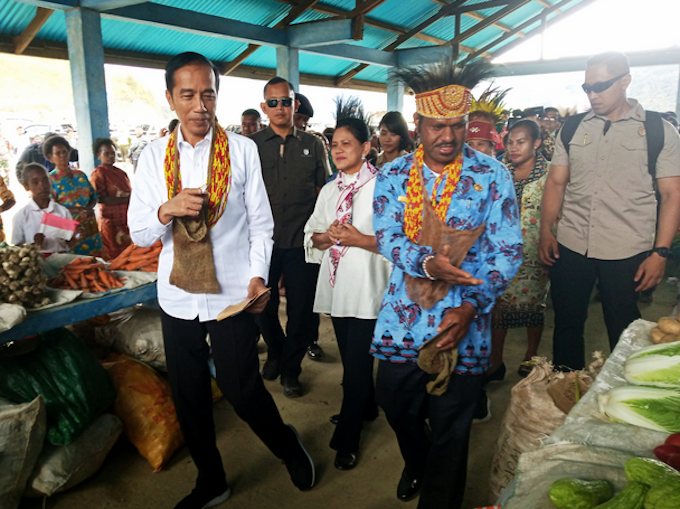
The politics of divide and rule and how Indonesia’s attempt to separate indigenous Papuans is an irrational and unrealistic proposal that will damage the cultural values of kinship and togetherness as Melanesian people, writes Dr Socratez Yoman.
ANALYSIS: By Dr Socratez Yoman
The Indonesian coloniser has become an ignorant ruler with deaf ears and with evil intention in fighting for the addition of new Papuan provinces without the population numbers to justify this.
Provincial division is a serious problem because the population of Papua and West Papua does not meet the requirements to establish new provinces.
The planned provinces will cause division and destruction of the cultural values of kinship and togetherness as Melanesian people.
After Indonesia failed with a plan to move 2 million indigenous Papuans to Manado, the new strategy devised by the Jakarta authorities is to separate indigenous Papuans according to ethnic groups. This is a crime against humanity and is a gross human rights violation carried out by the state.
The author followed the presentation from the Minister of Home Affairs of the Republic of Indonesia, Tito Karnavian, to the Working Meeting of Commission I DPD RI in Jakarta on 27 January 2021 regarding the government’s version of the Provincial Expansion scenario which was not rational or realistic.
The Minister of Home Affairs is not paying attention to the standards and requirements for the development of a new administrative area, such as area size, population, human resources and financial and natural resources.
The criteria for a new government have been largely ignored, but political interests and remilitarisation have become the main mission. To be honest, the people and nation of West Papua do not need lots of division of districts and provinces.
Military purpose for new provinces
These new provinces are only for political and military purposes and to move excess population from Java.
The proposal in summary
1. Papua Province
(the original province)
Capital: Jayapura
a. Jayapura Town
b. Jayapura Regency
c. Keerom Regency
d. Sarmi Regency
e. Maberamo Raya Regency
f. Waropen Regency
g. Kep. Yapen Regency
h. Biak Numfor Regency
i. Supiori Regency
2. South Papua Province
(new province)
Capital: Merauke
a. Merauke Regency
b. Boven Digoel Regency
c. Mappi Regency
d. Asmat Regeny
e. Peg Bintang Regency
3. Central Eastern Papua Province
(new province)
Capital: Wamena
a. Jayawijaya Regency
b. Lani Jaya Regency
c. Tolikora Regency
d. Nduga Regency
e. Maberamo Tengah Regency
f. Yalimo Regency
g. Yahukimo Regency
h. Puncak Jaya Regency
i. Puncak Regency
4. Western Central Papua Province
(still under debate)
Capital: Mimika
a. Mimika Regency
b. Paniai Regency
c. Deiyai Regency
d. Dogiay Regency
e. Nabire Regency
f. Intan Jaya Regency
5. West Papua Daya Province
(previously mostly West Papua Province)
Capital: Sorong
a. Town of Sorong
b. Sorong Regency
c. Sorong Selatan Regency
d. Maybrat Regency
e. Tambrauw Regency
f. Raja Ampat Regency
With these additions Papua would have five provinces. The mechanism for provincial expansion is in accordance with Article 76 of the Special Autonomy Law with additional authority changes from the central government when there is a deadlock in the region.
The total population of West Papua includes two provinces respectively: Papua Province 3,322,526 people and West Papua 1,069,498 inhabitants. The total is 4,392,024 inhabitants.
Evenly dividing up population
If the population is divided evenly from the total population of 4,392,024 the population for the five provinces are as follows:
1. Papua Province will be inhabited by a population of 878,404 people.
2. West Papua Province will be inhabited by a population of 878,404 people.
3. The Province of Puppet I will be inhabited by a population of 878,404 people.
4. The Province of Puppet II will be inhabited by a population of 878,404 people.
5. The Province of Puppet III will be inhabited by a population of 878,404 people.
The question is whether a province with a total population of 878,404 people is worthy and eligible to become a province?
It is very important to compare with the population of the provinces of West Java, Central Java and East Java.
1. Total population of West Java: 46,497,175 people.
2. Total population of Central Java: 35,557,248 people.
3. Total Population of East Java: 38,828,061 people.
The question is why does the government of the Republic of Indonesia not carry out splitting the provinces of West Java, Central Java and East Java, which have the largest population sizes?
‘Transfer of excess population’
As a consequence of a population shortage in this province, the Indonesian authorities will transfer the excess population of Malay Indonesians to these puppet provinces.
The creation of these five provinces also have as their main objective to build 5 military area commands, 5 police area command bases, tens of military district commands and dozens of police district headquarters and various other units. The land of Melanesia will be used as the home of the military, police and Indonesian Malay people.
The consequences will be that the indigenous Papuans from Sorong to Merauke will lose their land because the land will be robbed and looted to build office buildings, military headquarters, police headquarters, army district bases, and police district bases.
Humans will be removed, made impoverished, without land and without a future, even slaughtered and destroyed like animals in a natural or unnatural way as we have experienced and witnessed until the present.
There is evidence that a genocide process has been carried out by the modern colonial rulers of Indonesia in this era of civilisation. The crimes of the Indonesian colonial rulers continue to be exposed in public.
In 1969, when the West Papuan people were integrated into Indonesia, the indigenous population was around 809,337 people. Meanwhile, the neighbouring independent state of Papua New Guinea has around 2,783,121 people.
Since then, the indigenous population of PNG has reached 8,947,024 million, while the number of Indigenous Papuans is still only 1.8 million.
Modern colonial ruler
This fact shows that the Indonesian government is a modern colonial ruler which has occupied and colonised the people and nation of West Papua.
Dr Veronika Kusumaryati, a daughter of Indonesia’s young generation in her dissertation entitled: Ethnography of the Colonial Present: History, Experience, And Political Consciousness in West Papua, revealed:
“For Papuans, current colonialism is marked by the experience and militariSation of daily life. This colonialism can also be felt through acts of violence that are disproportionately shown to Papuans, as well in the narrative of their lives.
“When Indonesia arrived, thousands of people were detained, tortured and killed. Offices were looted and houses burned. … these stories did not appear in historical books, not in Indonesia, nor in the Netherlands. This violence did not stop in the 1960s.”
(Kusumaryati, V. (2018). Ethnography of the Colonial Present: History, Experience, And Political Consciousness in West Papua, p. 25).
The Indonesian government repeats the experience of the colonial rulers of apartheid in South Africa. In 1978, Peter W. Botha became Prime Minister and he carried out a politics of divide and conquer by dividing the unity of the people of South Africa through establishing puppet states: 1. The Transkei Puppet State. 2. The Bophutha Tswana Puppet State. 3. Venda Puppet State. 4. The Ciskei Puppet State. (Source: 16 Most Influential Heroes of Peace: Sutrisno Eddy, 2002, p. 14).
There is a serious threat and displacement of indigenous Papuans from their ancestral lands proven by the fact that in the regencies they have been robbed by the Malays and have been deprived of their basic rights for Indigenous Papuans in the political field. See the evidence and examples as follows:
1. Sarmi Regency 20 seats: 13 migrants and 7 indigenous Papuans (OAP).
2. Boven Digul Regency 20 seats: 16 migrants and 6 Indigenous Papuans
3. Asmat Regency 25 seats: 11 migrants and 14 Indigenous Papuans
4. Mimika Regency 35 seats: 17 migrants and OAP 18 Indigenous Papuans
5. 20 seats in Fakfak District: 12 migrants and 8 Indigenous Papuans.
6. Raja Ampat Regency, 20 seats: 11 migrants and 9 Indigenous Papuans.
7. Sorong Regency 25 seats: 19 migrants and 7 Indigenous Papuans.
8. Teluk Wondama Regency 25 seats: 14 migrants and 11 Indigenous Papuans.
9. Merauke Regency 30 seats: 27 migrants and only 3 Indigenous Papuans.
10. South Sorong Regency 20 seats. 17 migrants and 3 indigenous Papuans.
11. Kota Jayapura 40 seats: Migrants 27 people and 13 indigenous Papuans.
12. Kab. Keerom 23 seats. Migrants 13 people and 7 indigenous Papuans.
13. Kab. Jayapura 25 seats. Migrants 18 people and 7 indigenous Papuans.
Meanwhile, the members of the Representative Council of Papua and West Papua Provinces are as follows:
- Papua Province out of 55 members, 44 Papuans and 11 Malays/Newcomers.;
- West Papua Province, out of 45 members, 28 Malays/Newcomers and only 17 Indigenous Papuans.
Reverend Socratez Sofyan Yoman is a Baptist priest, author and human rights defender from Papua. He filed this article for Asia Pacific Report.





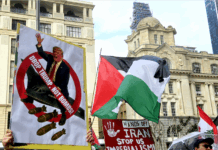


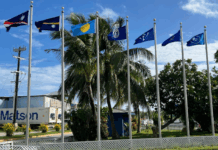




















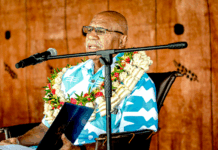

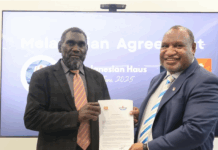













Aloha,
Please if you have a list..I would appreciate your putting me on it. I am Hanalei Fergerstrom…spokesperson for Na Kupuna Moku O keawe..Elders of the island of Hawaii. We have been following the tragic position the Papuans have been forced into by the Indonesian Government. While we know very little…even the little we know is a horror story. My email is hankhawaiian@yahoo.com. With light and Aloha we send to you. Ola Ha…life is in the breath.
Greetings Hanalei,
Thank you for your response.
We don’t have a “list” as such. Merely “like” and follow our Asia Pacific Report Facebook page and you will automatically link to West Papua items that we publish.
https://www.facebook.com/asiapacificreportnz
Editor
Asia Pacific Report
Comments are closed.